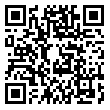- Forget Password



Success
In the period of the Republic of China, the central governments set up Mongol and Tibetan Affairs Bureau, Mongol and Tibetan Affairs Office, Mongol and Tibetan Affairs Commission successively to manage the administrative and religious affairs of Mongol, Tibetan and other ethnic minority regions. Formulating and implementing regulations on the Tibetan Buddhism was the major role of the organization. The central government decreed Regulations for Lama Temples' Administration, Measures on the Reincarnation of Lamas and Measures on Recognition of the Reincarnation of the Fourteenth Dalai Lama by the Drawing Lots successively and dispatched officials to preside the affairs such as Searching, recognition and enthronement of the reincarnated soul boys of the thirteenth Dalai Lama, ninth Panchen Erdeni and the fourth Reting Rinpoche (Fig. 17), the tenth Phagpalha Hutuktu (Fig. 18) etc.
In February, 1936, the Mongol and Tibetan Affairs Commission of the national government formulated regulations and reported to the Executive Council for approval then decreed the "Measures on the Reincarnation of Lamas", which was the first legislation especially for administration of Tibetan Buddhism Living Buddhas' Reincarnation. The measures had a total of 13 articles. Following "Twenty-Nine-Article Ordinance for the More Efficient Governing of Tibet" and "The Court of Colonial Affairs Regulations", it underlined the principles that the reincarnated soul boys of grand Living Buddhas such as the Dalai Lama, the Panchen Erdeni etc. should be recognized by the Drawing Lots from the Golden Urn and should be reported to central governments for approval (refer to Illustration 65).
The national government presided and accomplished the recognition and enthronement of the fourteenth Dalai Lama Tenzin Gyatso and the tenth Panchen Erdeni according to the "Measures on the Reincarnation of Lamas" and the religious rituals and historical convention.
I) The recognition of the fourteenth Dalai Lama
In 1933, upon the thirteenth Dalai Lama passing away, the reincarnation activities were carried out according to the "Measures on Recognition of the Reincarnation of the Fourteenth Dalai Lama by the drawing lots" made by the Mongol and Tibetan Affairs Commission. It went through the procedures as follows: (refer to Illustration 72)
I)The Tibetan local government reported the situation of the passing away and the national government conferred the title and organized memorials among various social groups in Nanjing (refer to Illustrations 95, refer to Illustrations 62).
II) Reincarnation summon, which was, the Tibetan local government organized reincarnation summon activities.
III) Divination, which was seeking for omens of the reincarnation through divination.
IV) Dharmapala Seance, which was, the thirteenth Dalai Lama faced east when he passed away, therefore, the four grand Dharmapalas all threw Hadas eastwards.
V) Observation of the Lake, which was, in 1935, the Reting Rinpoche went to the Lhamo Latso Lake for observing.
VI) Searching for candidate soul boys secretly. In 1934, the Reting Rinpoche dispatched 3 branches of people to go to Qinghai, Xikang, Lhoka respectively for searching. As a result, in 1937, a soul boy Lhamo Thondup (1935-) was found in Qijiachuan in Huangzhong County of Qinghai province and was greeted into Kumbum Monastery.
VII) Recognition of remaining belongings, which was, the soul boy, in the courtyard of the provincial government of Qinghai, recognized the thirteenth Dalai Lama's remaining belongs accurately, which includes: the yellow pearl, the black pearl, the silver rattle and the cane.
VIII) The central government approved for exemption of Drawing Lots from the Golden Urn. The national government instructed to escort the three candidate soul boys, Lhamo Thondup et al, to Lhasa to carry out the Drawing Lots from the Golden Urn for recognition. In 1938, the national government ordered Ma Bufang (1903-1975),Chairman of Qinghai province, to dispatch soldiers to escort Lhamo Thondup to Lhasa in 1939, then Chairman of the Mongol and Tibetan Affairs Commission, Wu Zhongxin (1884-1959), went to Lhasa and presided over the reincarnation affairs along with the Reting Rinpoche (refer to Illustration 67). In 1940, after Wu Zhongxin reached Lhasa, the Regent Reting Rinpoche reported to the central government to request exemption of drawing lots, as Lhamo Thondup was widely regarded as the reincarnation of the thirteenth Dalai Lama by Tibetan monks and laymen. The national government approved as "exempt from the drawing lots and approve to enthrone as the fourteenth Dalai Lama" after Wu Zhongxin overseeing the soul boy. The national government provided an enthronement expenditure of 400,000 fabi (refer to Illustrations 68, refer to Illustrations 69).
IX) Enthronement, which was, the central government dispatched the representative Wu Zhongxin to preside over the enthronement affairs.
In April 1940, presiding by central government's representative Wu Zhongxin, the fourteenth Dalai Lama was enthroned in the Potala Palace in Lhasa. The Reting Rinpoche telegrammed and dispatched people to the central government office in Chongqing to express gratitude. The fourteenth Dalai Lama wrote letters the central government to express his gratitude as well.(refer to Illustrations 70, refer to Illustrations 71)
X) Conferring by the central government
